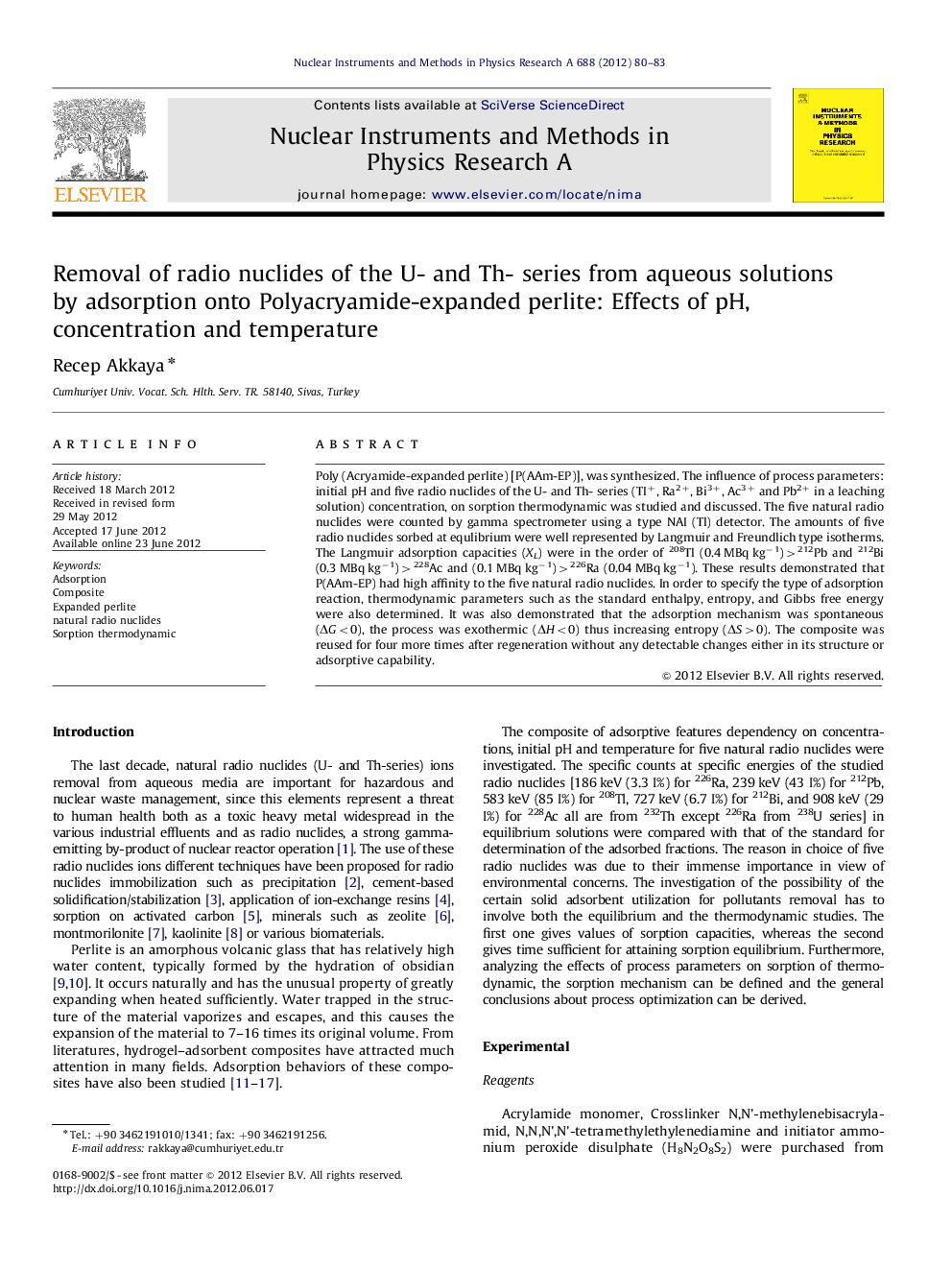| Article ID | Journal | Published Year | Pages | File Type |
|---|---|---|---|---|
| 1823734 | Nuclear Instruments and Methods in Physics Research Section A: Accelerators, Spectrometers, Detectors and Associated Equipment | 2012 | 4 Pages |
Poly (Acryamide-expanded perlite) [P(AAm-EP)], was synthesized. The influence of process parameters: initial pH and five radio nuclides of the U- and Th- series (TI+, Ra2+, Bi3+, Ac3+ and Pb2+ in a leaching solution) concentration, on sorption thermodynamic was studied and discussed. The five natural radio nuclides were counted by gamma spectrometer using a type NAI (Tl) detector. The amounts of five radio nuclides sorbed at equlibrium were well represented by Langmuir and Freundlich type isotherms. The Langmuir adsorption capacities (XL) were in the order of 208Tl (0.4 MBq kg−1)>212Pb and 212Bi (0.3 MBq kg−1)>228Ac and (0.1 MBq kg−1)>226Ra (0.04 MBq kg−1). These results demonstrated that P(AAm-EP) had high affinity to the five natural radio nuclides. In order to specify the type of adsorption reaction, thermodynamic parameters such as the standard enthalpy, entropy, and Gibbs free energy were also determined. It was also demonstrated that the adsorption mechanism was spontaneous (ΔG<0), the process was exothermic (ΔH<0) thus increasing entropy (ΔS>0). The composite was reused for four more times after regeneration without any detectable changes either in its structure or adsorptive capability.
► The composite provide an enhanced adsorption uptake for radio nuclides of the U- and Th-series ions. ► The composite can be applied to the Langmuir and Freundlich models. ► Thermodynamic parameters indicated adsorption process was spontaneous, exothermic. ► The P(HEMA-EP) composite is reused up to 5 times with no loss of removal efficiency.
